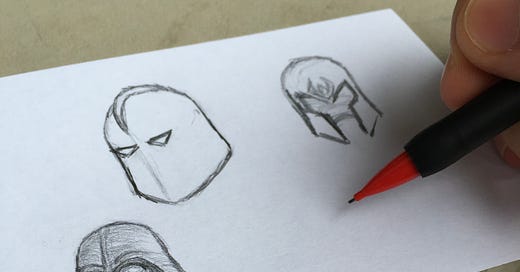Writing Good Villains
It’s the hero’s job to make things right, but it’s the villain’s job to BE right.
This post will be a little different than my previous manifestos — it’s more artistic than political. It’s also inspired by a years-long, back-and-forth debate with my little sister about whether Voldemort is a good villain. (Love you, Kata. Besos.)
I love bad guys. Nothing draws me into a story more than a good villain. This holds true across genres and media — from Shakespeare to science fiction, literary dramas to indie movies. Even when the other characters or the pacing or the plot are underwhelming, an amazing antagonist can carry the whole story for me.
But what makes a good bad guy? Are they sympathetic and righteous like Magneto, or irredeemable and diabolical like the Joker? Do they have a tragic backstory that broke them like Darth Vader, or were they always evil like Azula? Are they the hero’s polar opposite like Amon, or a dark reflection of the good guys like the Red Lotus?
Since I vibe with all the aforementioned antagonists, I think good villains can be any of the above — but so can bad ones. So what’s the difference? What’s the secret ingredient that separates the iconic from the indifferent? When you dig down to the heart of the matter, I believe the best bad guys always represent a truth their heroes lack. Simply put — a good villain is “right”.
To be clear, I don’t mean that the best villains must have noble goals, or must even be consciously truthful. (Although either can certainly be the case.) After all, in a traditional heroic story, the good guys should usually “win” in the end — proving the villain “wrong” and defeating their “argument”. I only assert that memorable antagonists must embody — whether explicitly or implicitly — a fundamental truth that the protagonists fail to accept, at least initially. This dynamic creates a better story, because the villain forces the hero to confront an uncomfortable truth in order to defeat them. The bad guy compels the good guy to grow, change, and embrace a deeper understanding of the world in order to fix it.
Think of how Killmonger forces Black Panther to acknowledge how Wakanda allowed black communities to suffer worldwide while gatekeeping their perfect little utopia. Or how Magneto forces the X-Men to recognize that their idealism is a luxury in a world of zero-sum tribalism: sometimes survival demands that you crush or be crushed. Or how Amon forces Korra to realize the injustice of a world ruled by elite benders, with nonbenders locked-out of all centers of power. And — while the movie isn’t out yet — I predict points will be made by Gorr in Thor 4.
None of this demands that the villain’s truth be vindicated by the hero. Luke Skywalker concedes Darth Vader’s truth — that even the best person can fall to darkness — while still choosing to believe in the deeper truths of hope and redemption. Batman confronts the Joker’s belief that everyone is a monster at their core, but ultimately rejects it as cynical. And in Philosopher’s Stone and Chamber of Secrets — the only instances where I felt Voldemort was actually a good villain — Harry considers but eventually dismisses Voldemort’s “might makes right” philosophy, espousing instead the greater power of selfless love.
There’s a real-life moral lesson we can learn from this villainous trope, one with political and cultural implications connecting to my previous Substack — learn from your enemies. The people who hate us can sometimes (inadvertently) be our wisest teachers if we’re willing and able to learn. Even when our opponents wish us harm and act in bad-faith, we can often extract useful insights by putting ourselves in their shoes. At best, maybe you’ll find some common ground that turns them from adversary to ally. At worst, maybe you’ll discover ways to beat them at their own game. I’ll come full-circle to leave you with my original thesis of what makes a good bad guy — “It’s the job of the hero to make things right, but it’s the job of the villain to BE right.”




